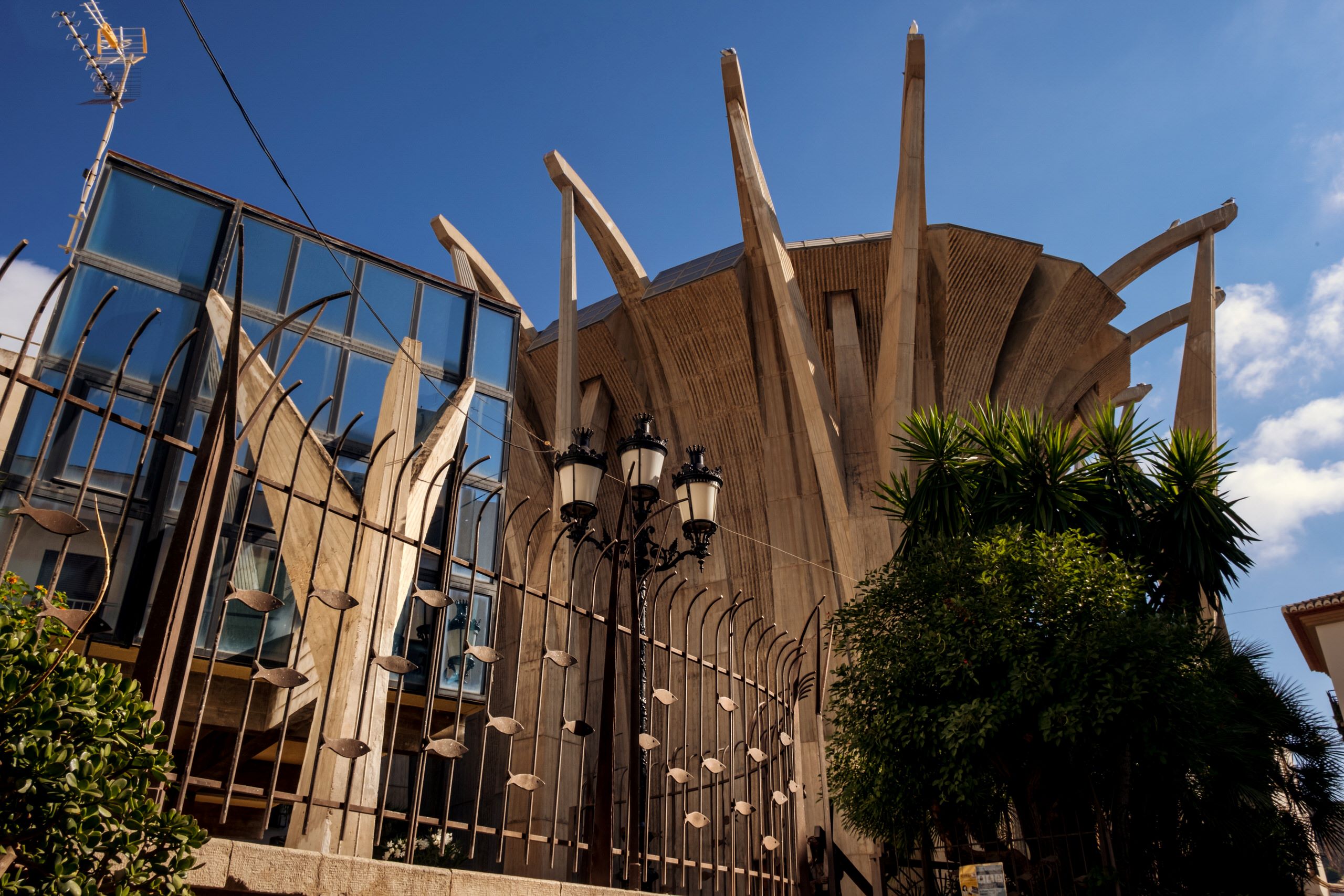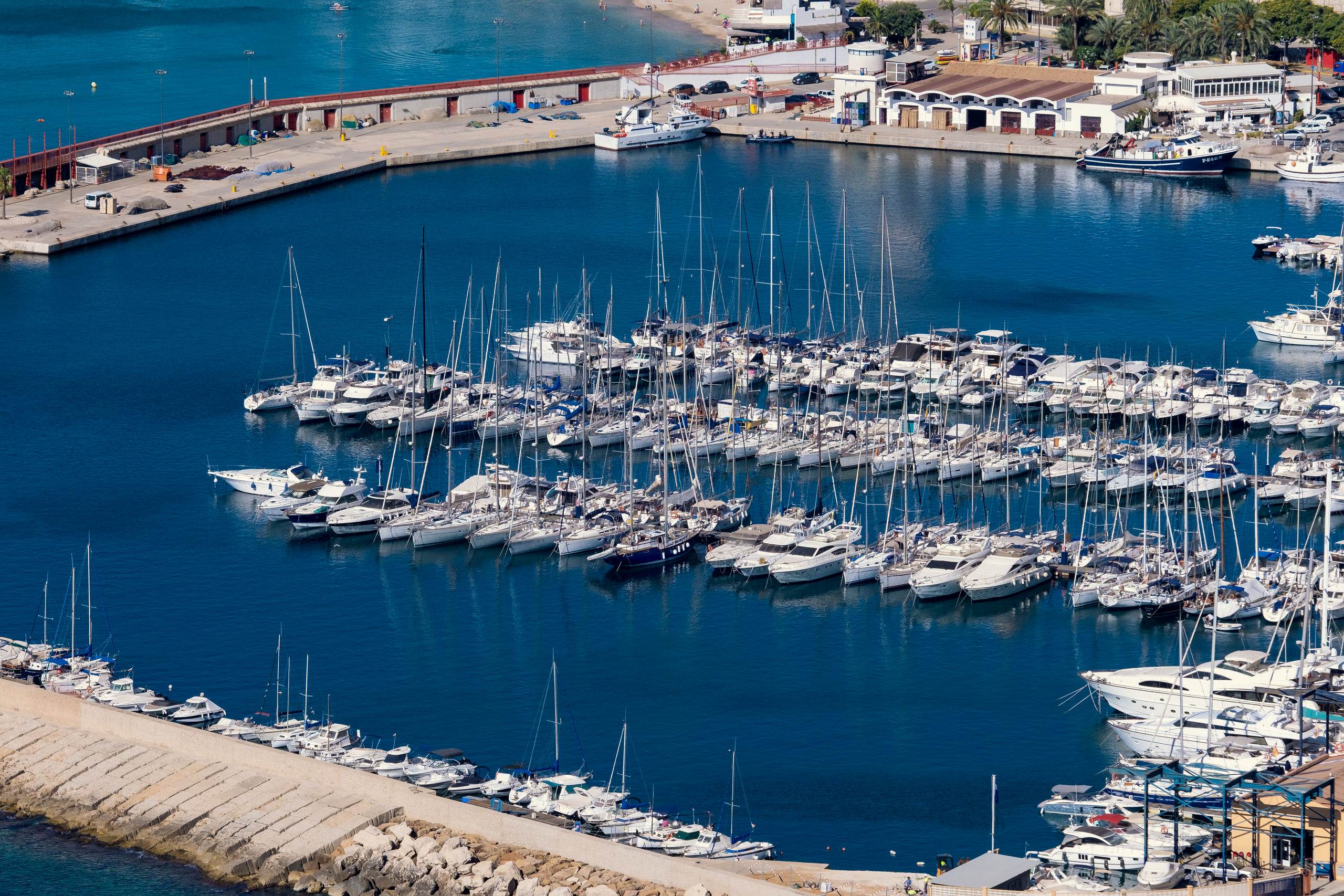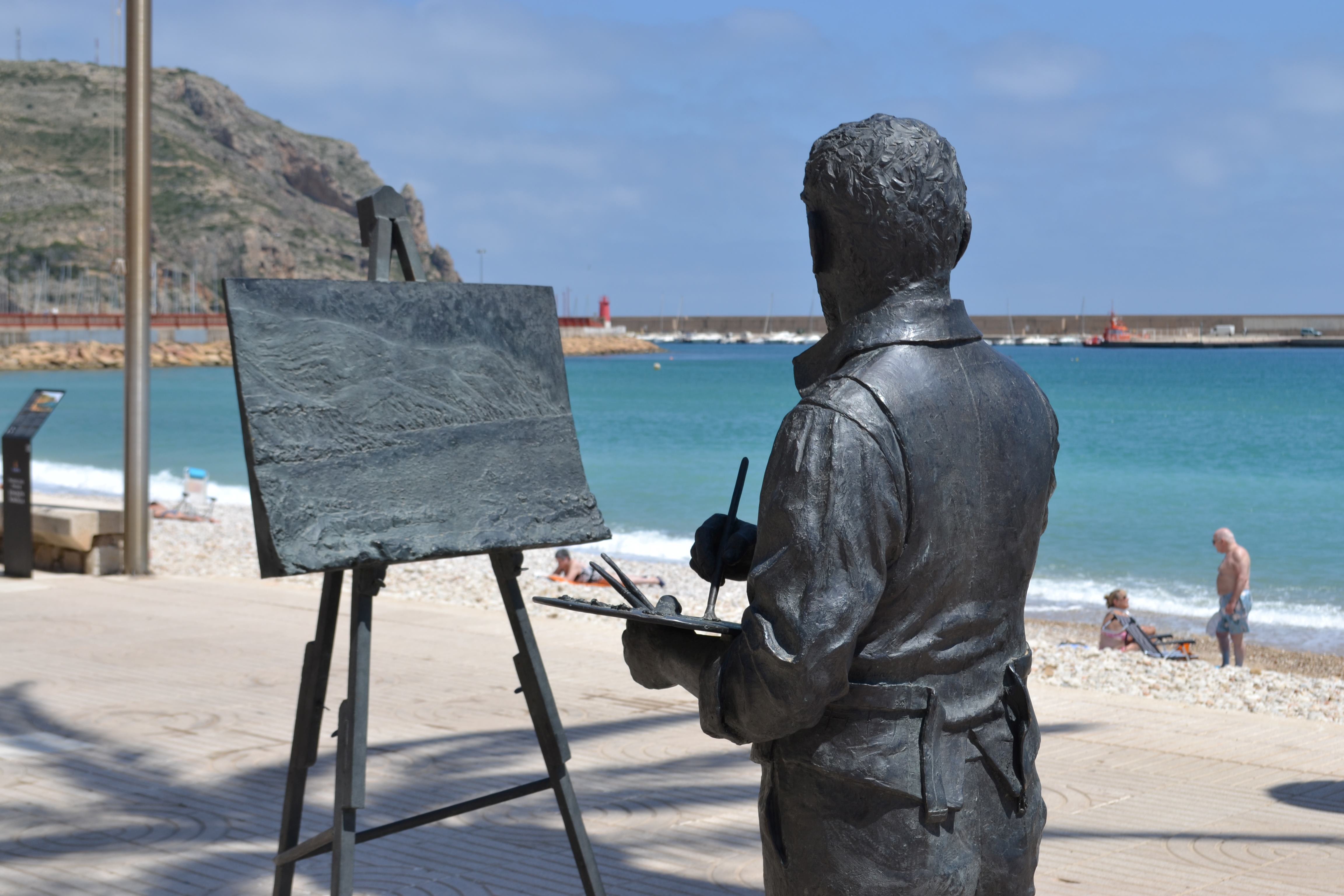Urban routes
Popular saying
Don't trade old paths for new ones.
Popular saying
Xàbia
Passeig per Duanes de la Mar

The origins of the port date back to the 15th century. Over the subsequent centuries, it grew and expanded, reaching its peak in the 19th century when it became prosperous with the export of raisins. Around the port, a neighbourhood with a strong maritime character developed, featuring small single-story whitewashed fishermen's houses and narrow streets. The charm of this neighbourhood is further enhanced by the sculptural silhouette of the church known as Església de La Nostra Senyora de Loreto, inaugurated in 1967. It is an important example of avant-garde religious architecture, standing out for its daring design and spatial concept.
Another noteworthy building in the port area is Casa del Cable (1860), of which only the pillars of the “naia” (a covered terrace) have been preserved. It has been rehabilitated and now serves as an exhibition hall. Duanes de La Mar is one of the liveliest neighbourhoods throughout the year. Along its streets one can find all kinds of shops, restaurants and other services. The arrival of the fishing boats, the auction, and the subsequent sale of fish in the fish market have become an essential attraction for visitors. Adjacent to the port, the Nautical Club offers various options for water sports enthusiasts. (1)
(1) This information was extracted from the Xàbia tourism website.
Places of interest
Xàbia

Useful information...
With the funding of:












